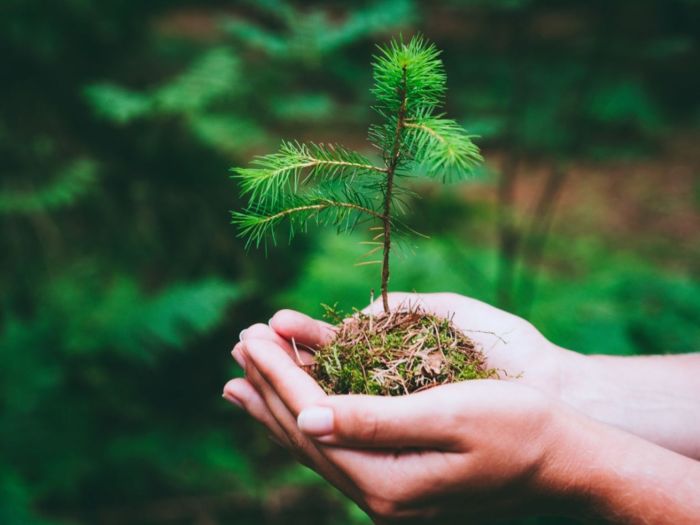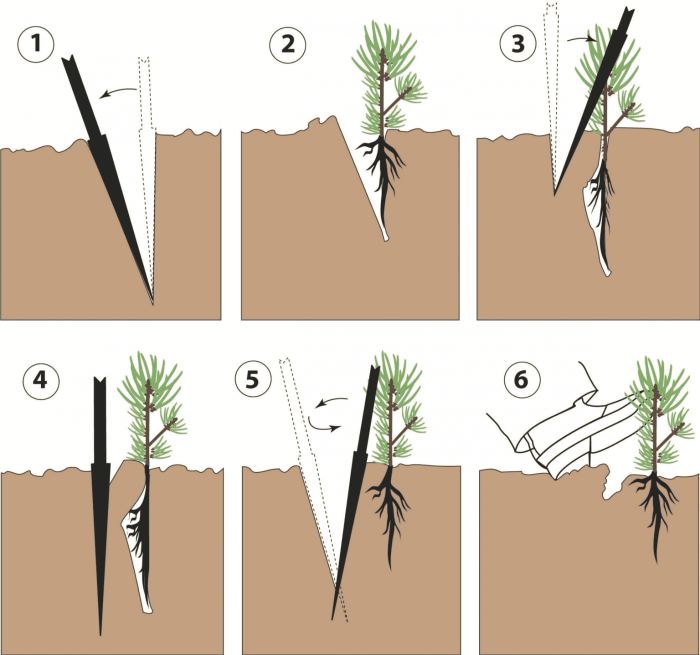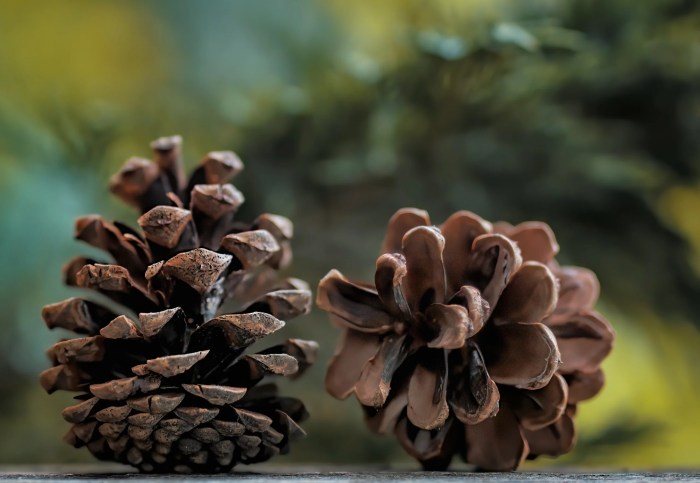How to Plant Pine Tree Seeds
Planting Pine Tree Seeds: A Comprehensive Guide

Source: gardeningknowhow.com
How to plant pine tree seeds – Growing pine trees from seed can be a rewarding experience, offering a connection to nature and the satisfaction of nurturing a tree from its earliest stages. This guide provides a step-by-step approach, covering seed collection, starting methods, germination care, transplanting, and ongoing maintenance. Remember that success depends on careful attention to detail and patience, as pine seeds can have variable germination rates.
Seed Collection and Preparation
The success of your pine tree planting project begins with proper seed collection and preparation. Understanding the optimal time for collection and employing appropriate cleaning and storage techniques significantly impacts germination rates.
- Optimal Seed Collection Time: The best time to collect pine cones is typically in late autumn or early winter, after the cones have fully matured and opened to release their seeds. This varies depending on the specific pine species and local climate.
- Extracting Seeds from Pine Cones: Gently open the mature cones, either by hand or by placing them in a warm, dry area for a few days to allow them to open naturally. Carefully extract the seeds, taking note of their size and shape, as this can vary between species.
- Cleaning and Preparing Pine Seeds: Remove any debris, such as cone fragments or wing attachments, from the seeds. Cleaning can be done by hand or using a gentle air blower. You might need to separate viable seeds from the less viable ones by floating them in water – viable seeds will sink.
- Storing Pine Seeds: Store cleaned seeds in a cool, dry place in airtight containers. Proper storage is crucial for maintaining seed viability. Consider using a refrigerator at a temperature slightly above freezing (around 33-40°F or 0-4°C) for longer-term storage. Label your containers with the species and collection date.
Seed Starting Methods
There are two primary methods for starting pine tree seeds: direct sowing and starting indoors. Each method has its advantages and disadvantages. Choosing the right method depends on factors like the species of pine, your climate, and your available resources.
Direct sowing involves planting seeds directly into the ground. Starting indoors allows for greater control over the environment and increases the chances of successful germination, particularly in colder climates. It’s usually preferred for more delicate species.
Starting Pine Seeds Indoors:
- Fill seed trays with a suitable growing medium (see table below).
- Sow the seeds at a depth of approximately twice their diameter.
- Gently cover the seeds with the growing medium.
- Water thoroughly but avoid overwatering.
- Place the trays in a warm, bright location (but avoid direct sunlight).
- Maintain consistent moisture levels.
- Once seedlings develop a few sets of true leaves, they can be transplanted into individual pots.
| Medium Name | Pros | Cons | Drainage |
|---|---|---|---|
| Seed Starting Mix | Well-draining, readily available | Can be expensive, may need amendments | Excellent |
| Peat Moss | Retains moisture, inexpensive | Can be too acidic for some species, can compact | Moderate |
| Vermiculite | Excellent aeration, good moisture retention | Can be expensive, needs amendment for nutrients | Good |
| Perlite | Excellent drainage and aeration | Doesn’t retain moisture well, needs amendment for nutrients | Excellent |
Importance of Drainage and Aeration: Proper drainage prevents waterlogging, which can lead to root rot and damping-off, a common fungal disease affecting seedlings. Aeration ensures adequate oxygen supply to the roots, crucial for healthy growth.
Preparing Soil for Direct Sowing: For direct sowing, prepare the soil by loosening it to a depth of several inches and removing any weeds or debris. Ensure the soil is well-draining. Mixing in some organic matter, like compost, can improve soil structure and fertility.
Germination and Seedling Care
Maintaining the ideal environmental conditions is crucial for successful pine seed germination and seedling development. Consistent moisture, appropriate temperature, and protection from disease are key elements.
- Ideal Temperature and Humidity: Pine seeds generally germinate best at temperatures between 65-75°F (18-24°C). Maintaining moderate humidity levels is also beneficial.
- Watering Requirements: Keep the growing medium consistently moist, but avoid overwatering. Allow the top inch of soil to dry slightly between waterings.
- Challenges and Preventive Measures: Fungal diseases, such as damping-off, can be a significant problem. Ensure good drainage, avoid overwatering, and consider using a fungicide as a preventative measure.
- Protecting Seedlings: Protect young seedlings from extreme weather conditions such as frost, intense sunlight, and strong winds. Use shade cloth or other protective barriers as needed.
Transplanting Seedlings
Transplanting pine seedlings requires care to minimize root disturbance and ensure successful establishment in their new location. The timing and method of transplanting depend on the seedling’s size and the climate.
Planting pine tree seeds requires careful stratification and a well-draining soil mix. The process, while straightforward, demands patience; similarly, starting asparagus from seed also needs meticulous preparation. For detailed instructions on that, check out this helpful guide on how to plant asparagus from seed. Understanding the nuances of germination, whether for pines or asparagus, is key to successful cultivation.
Remember consistent moisture is vital for both pine seeds and successful sprouting.
- Optimal Transplanting Time: The best time to transplant is typically in spring or early autumn, when the weather is mild and the soil is moist.
- Transplanting Process: Gently remove seedlings from their containers or the seed tray, being careful not to damage the roots. Plant them in individual pots or directly into the ground, ensuring the root ball is at the same depth as it was previously.
- Minimizing Root Disturbance: Minimize root disturbance during transplanting to reduce transplant shock. Handle seedlings carefully.
- Preparing the Planting Site: Prepare the planting site by loosening the soil and removing any weeds or debris. Amend the soil with organic matter if needed.
- Creating a Protective Barrier: Create a protective barrier around each seedling to protect it from animals, harsh weather, and competition from weeds. This could be a small cage, mulch, or other suitable material.
Ongoing Care and Maintenance, How to plant pine tree seeds

Source: aces.edu
Continued care is vital for the healthy growth of young pine trees. Proper watering, fertilization, pest and disease control, and pruning are all essential aspects of long-term maintenance.
- Watering Needs: Water young pine trees regularly, especially during dry periods. The frequency of watering will depend on the climate and soil conditions.
- Fertilization: Fertilize young pine trees annually with a balanced, slow-release fertilizer. Follow the manufacturer’s instructions for application rates.
- Pest and Disease Control: Regularly inspect young pine trees for pests and diseases. Take appropriate measures to control any problems that arise.
- Pruning and Shaping: Prune young pine trees to remove dead or damaged branches and to shape them as desired. Avoid excessive pruning.
Illustrative Examples

Source: tentree.com
Different pine species have varying seed characteristics and ideal growing conditions. Understanding these differences is crucial for successful cultivation.
| Pine Tree Type | Seed Characteristics | Ideal Soil Conditions | Climate Preferences |
|---|---|---|---|
| Eastern White Pine (Pinus strobus) | Small, winged seeds | Well-drained, slightly acidic soil | Cool, humid climate |
| Scots Pine (Pinus sylvestris) | Small, winged seeds | Well-drained, sandy or loamy soil | Cool, temperate climate; tolerates drought |
| Ponderosa Pine (Pinus ponderosa) | Large, winged seeds | Well-drained, slightly acidic to neutral soil | Warm, dry climate |
Healthy Pine Seedlings: Healthy pine seedlings at early stages exhibit vibrant green needles, a steady growth rate, and a strong central leader. As they mature, the needles become longer and the overall structure becomes more defined. The growth rate varies significantly between species.
Healthy Mature Pine Tree: A healthy mature pine tree will have a well-defined shape, characteristic of its species, a strong central leader, and healthy, vibrant green needles. The size varies greatly depending on the species, with some reaching impressive heights and widths.
Query Resolution: How To Plant Pine Tree Seeds
Can I use pine cones from any pine tree?
While you can collect cones from various pines, success depends on seed viability. Some pines produce seeds less readily than others. Research the specific pine species for best results.
How long does it take for pine seeds to germinate?
Germination time varies greatly depending on the species and conditions, but can range from a few weeks to several months. Patience is key.
What are the signs of a healthy pine seedling?
Healthy seedlings exhibit vibrant green needles, steady growth, and a strong root system. Look for signs of disease or pest infestation.
How often should I water young pine trees?
Water regularly, especially during dry periods, but avoid overwatering, which can lead to root rot. Check soil moisture before watering.




















